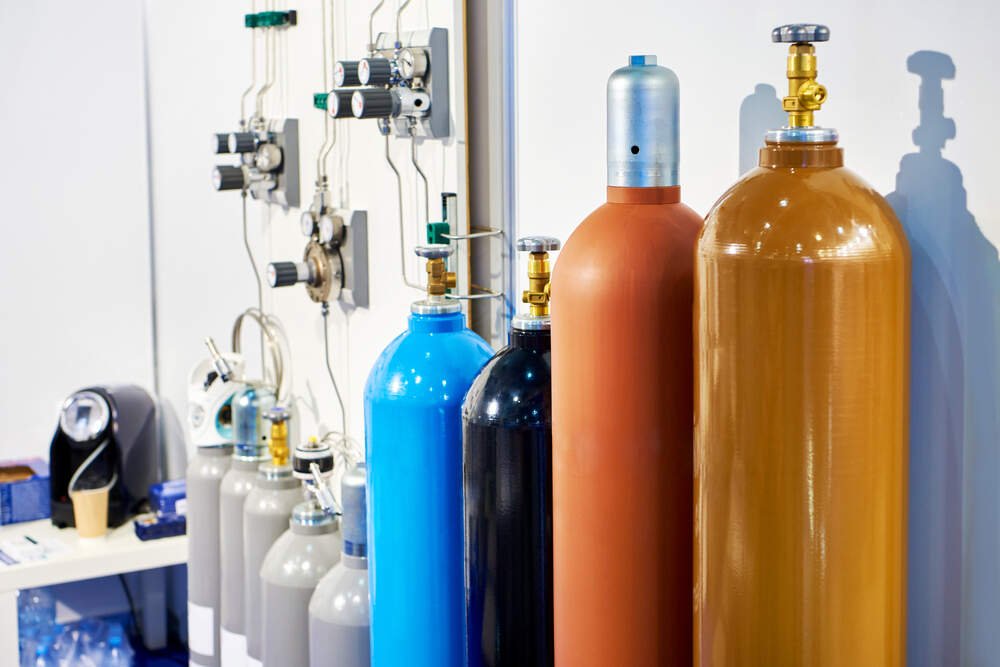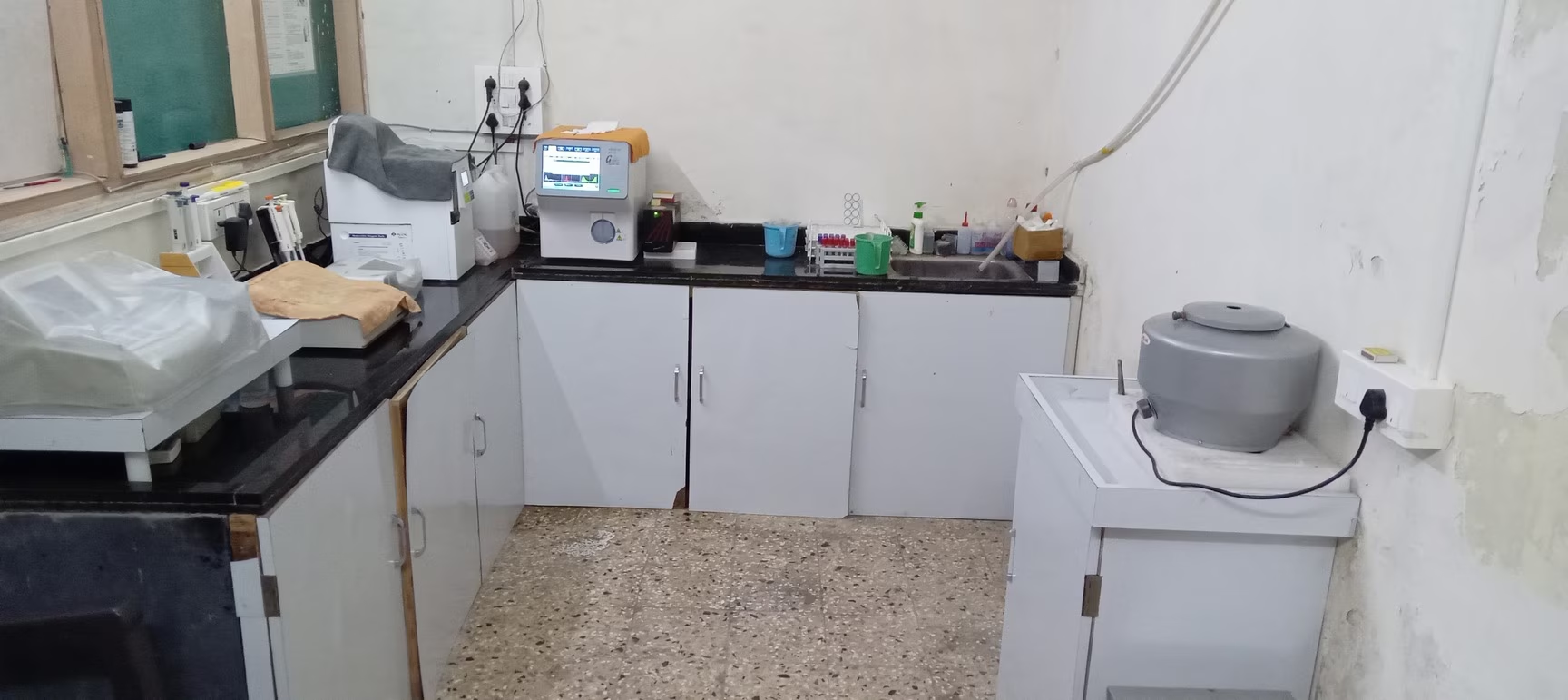
Analytical Services
Our laboratory is equipped with high-resolution instruments, including gas chromatographs and advanced analyzers, supported by a wide range of detectors and chromatographic columns.
In laboratories and research facilities, various instruments and processes rely heavily on gas supplies for operation, calibration, and analysis. Storing gas cylinders directly in the laboratory can pose safety risks and occupy valuable space. A well-designed and strategically placed gas delivery system enhances laboratory safety and operational efficiency. Equally important are considerations for high-purity gas requirements—such as material compatibility, flow capacity, and construction quality—to ensure safety, performance, and cost-effectiveness. Adherence to industry codes and standards is essential for the proper storage, usage, and installation of these systems.
Designing an efficient gas installation starts with a thorough audit of the gas needs for each instrument and location. This includes identifying the type of gas, required purity level, delivery pressure, and peak flow rates. Accurate data ensures the right pipe sizing, optimal storage planning, and appropriate supply modes. Overestimating these needs can lead to unnecessary expenses, while underestimating can result in system inefficiencies and operational interruptions.
Proper placement of gas storage areas is crucial for safety. Compressed or cryogenic gas cylinders must be stored upright, secured with chains or straps, and kept in well-ventilated, illuminated areas away from heat sources or combustible materials. Compliance with safety regulations ensures minimal risk and efficient operation.
Selecting the correct pipe or tubing size depends on calculating the total maximum gas flow demand across all application points. A safety margin of 20–50% is recommended to accommodate future expansion or increased usage, ensuring uninterrupted supply and optimal system performance.
Maintaining gas purity is paramount. Delivery systems must use materials compatible with the specific gas type and purity levels. Preferred systems use bar stock brass or 316L stainless steel, with metal-to-metal diaphragm seals for minimal contamination. Proper system design—from storage to outlet—ensures that gas integrity is maintained throughout its journey.
By following these guidelines, laboratories can achieve a safe, efficient, and cost-effective gas delivery infrastructure tailored to their operational requirements.
Cylinder Hydro Testing Shop
Cylinder hydrotesting, also known as hydrostatic testing, is a non-destructive procedure used to verify the structural integrity, safety, and reliability of gas cylinders. This method detects leaks, corrosion, and structural weaknesses by subjecting the cylinder to high internal water pressure while enclosed in a test jacket. The process measures the total and permanent volumetric expansion by analyzing how much water is displaced during pressurization and after the pressure is released.
Visual inspections—both internal and external—are conducted as part of the evaluation, along with dead-ring tests for steel cylinders. Although we specialize in comprehensive hydrostatic stretch testing for most gas cylinders, we do not test disposable gas bottles or cylinders containing acetylene, carbon dioxide, liquid hydrocarbons, or any welded cylinders, regardless of their material of construction (MOC).
At Alchemie Gases & Chemicals Pvt. Ltd., we recommend regular hydrotesting of all other eligible gas cylinders to ensure they are safe for continued use. While the test itself is non-destructive, extreme pressure or pre-existing flaws (like micro-cracks) in the cylinder can lead to failure during testing. All hydrotests are conducted under strict, standardized procedures in line with government regulations.
We are certified to perform hydrotesting on cylinders manufactured as per standards set by the Petroleum and Explosives Safety Organisation (PESO), Government of India, including CO₂ fire extinguishers ranging from 1 to 68 liters in capacity.
According to PESO guidelines, high-pressure seamless gas cylinders must undergo hydrotesting every five years. However, cylinders used for toxic or compressed natural gases (CNG) are subject to stricter regulations and should be tested every two years or as specified by PESO.
Hydrotesting evaluates a cylinder's elasticity—its ability to return to original dimensions after being stressed during gas filling. Over time, elasticity can degrade, increasing the risk of failure. To ensure safe operation, cylinders are tested at a pressure 1.5 to 1.66 times their normal working pressure, depending on their design and material.
Regular testing helps determine whether the cylinder is safe for continued use or should be decommissioned due to permanent deformation or material fatigue.
The Water Jacket Method involves placing the gas cylinder in a sealed chamber (jacket) filled with water. As the cylinder is pressurized, it expands, displacing water into a calibrated glass tube. After the pressure is released, any permanent expansion is measured to evaluate the cylinder’s structural integrity. In the Proof Pressure Method, the cylinder is pressurized internally to check for wall thinning, minor leaks, or other structural defects. Unlike the water jacket method, this test does not measure expansion but ensures the cylinder can withstand a certain pressure without failure. Pneumatic Testing, on the other hand, uses compressed air or nitrogen instead of water. While it is useful in specific cases, this method requires extreme caution due to the high compressibility of gases, which can increase the risk factor if a failure occurs under pressure.
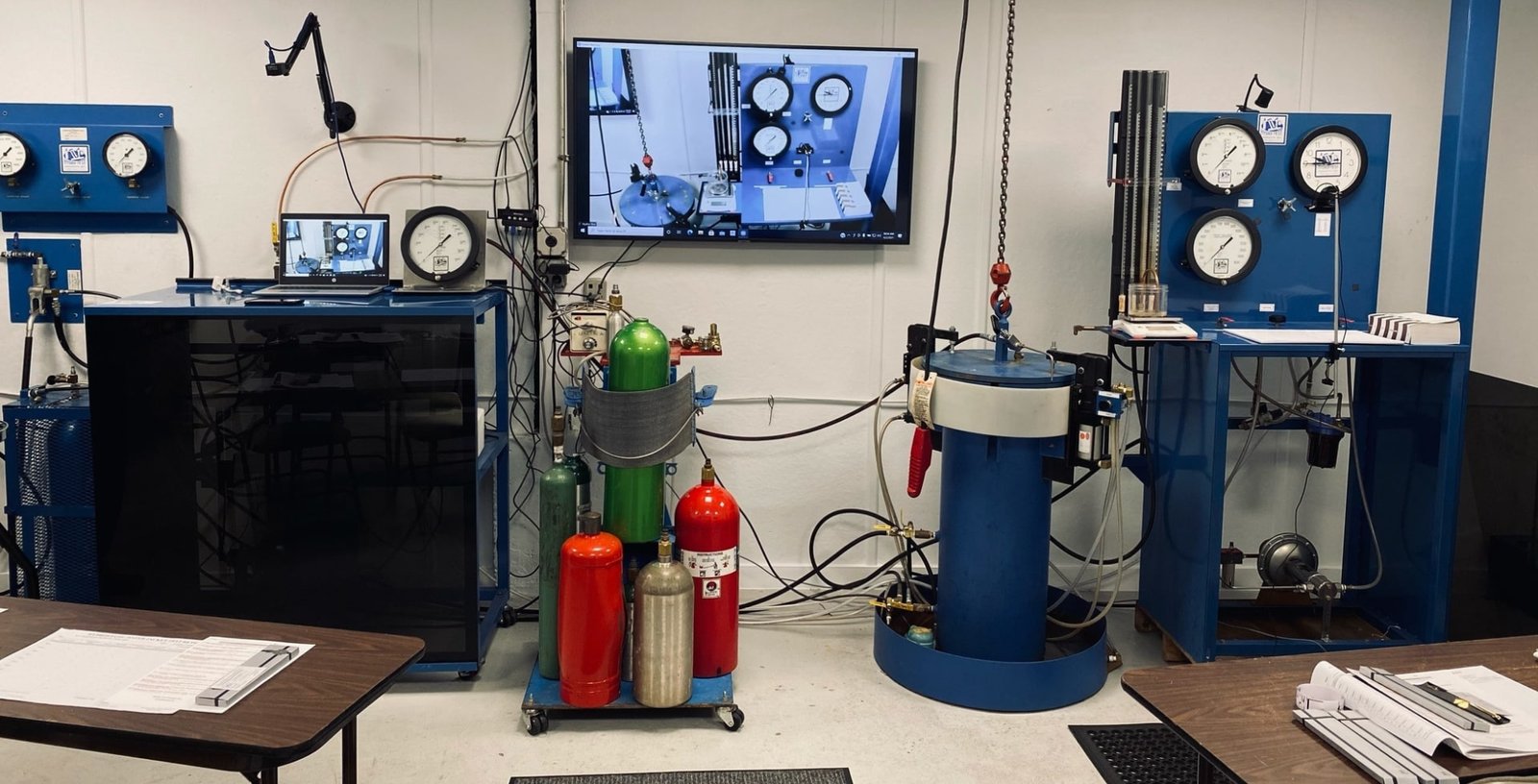
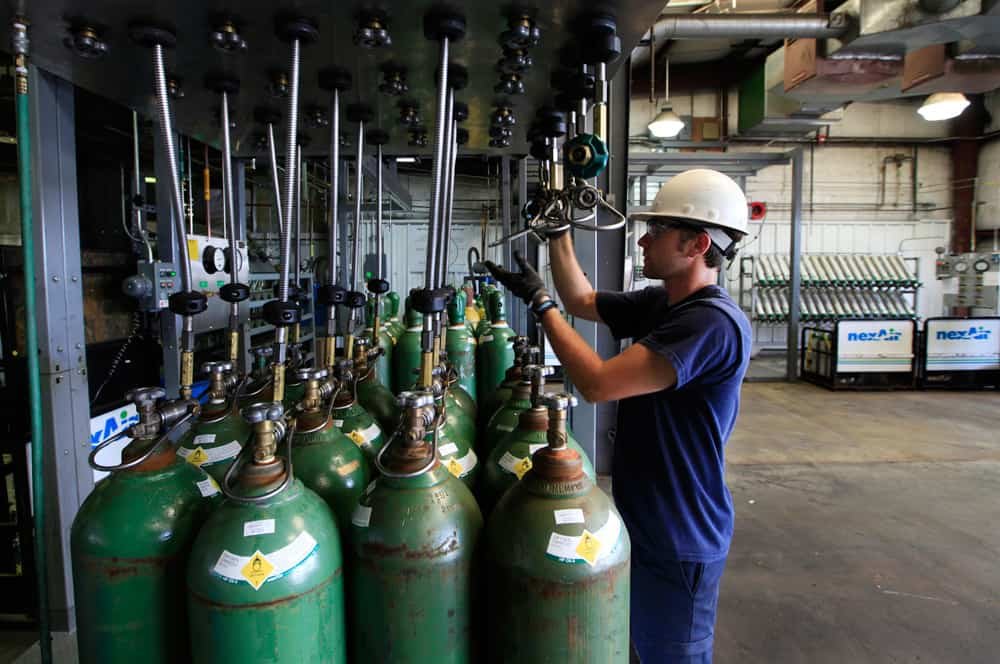
Training In Gas Handling
We offer expert-led training workshops focused on gas safety and proper handling procedures to promote workplace safety and compliance.
Our Training Covers:
- Proper identification of gas cylinders
- Awareness of asphyxiation and flammability hazards
- Selection and use of appropriate gas control equipment
- Safe manual handling techniques
- Evaluation and improvement of current gas storage practices
- Integration of best safety practices in the working environment
Ensure the safety of your personnel and facility by participating in our Gas Handling Safety Training—designed to meet industrial standards and tailored to your operational needs.
Industries
We serve a wide range of industries, including Automotive, Pharmaceuticals, Cement, Fertilizers, Food & Beverages, Hospitals, Instrumentation, Laser Gas, Lighting, Metal Manufacturing and many more.
We cater to a wide range of industries, including:
- Automotive Industry
- Pharmaceuticals
- Cement Industry
- Fertilizers
- Food & Beverages
- Hospitals
- Instrumentation
- Laser Gas Applications
- Lighting Industry
- Metal Manufacturing & Fabrication
- Petrochemical & Refineries (Oil & Gas)
- Research and Laboratory Facilities
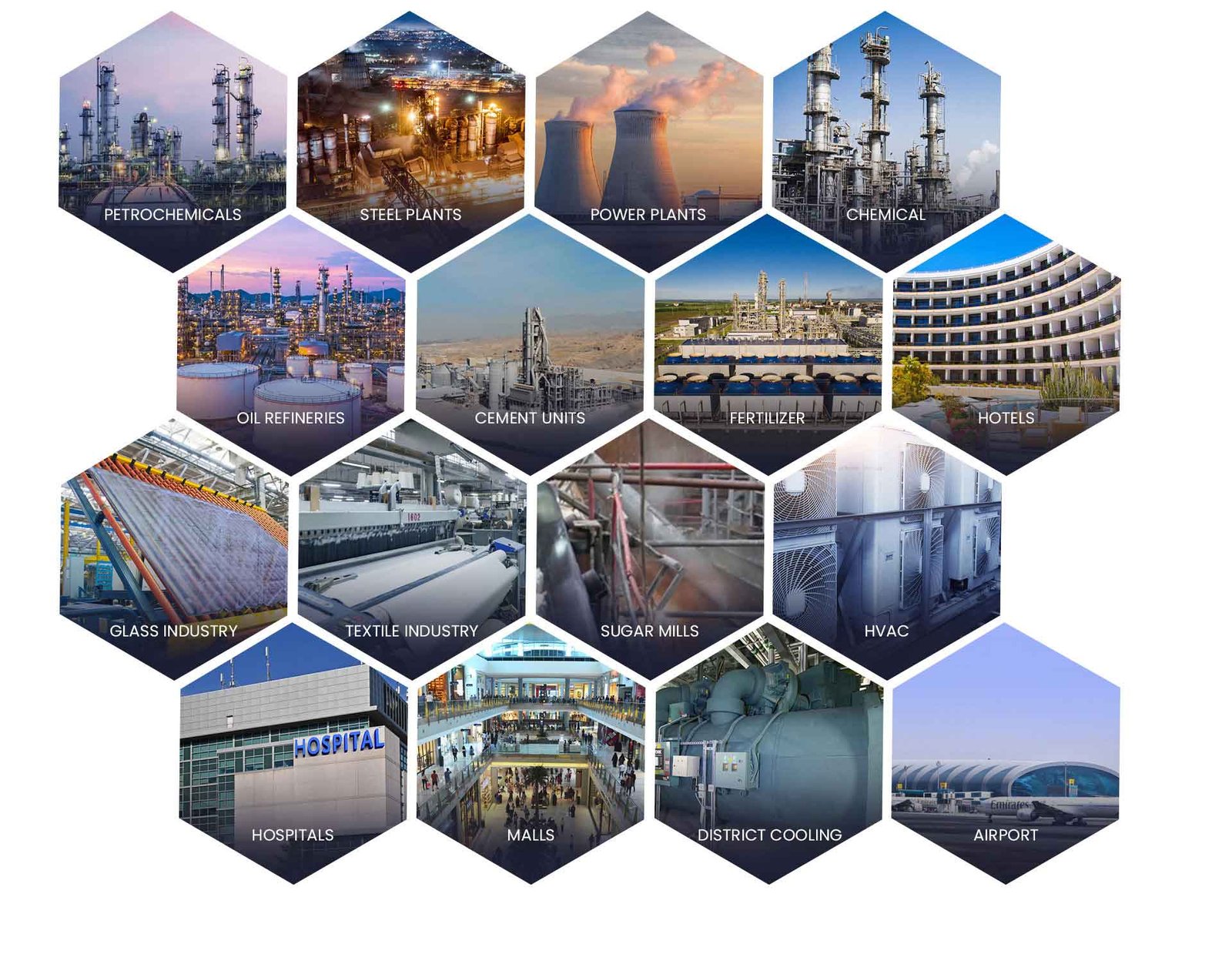
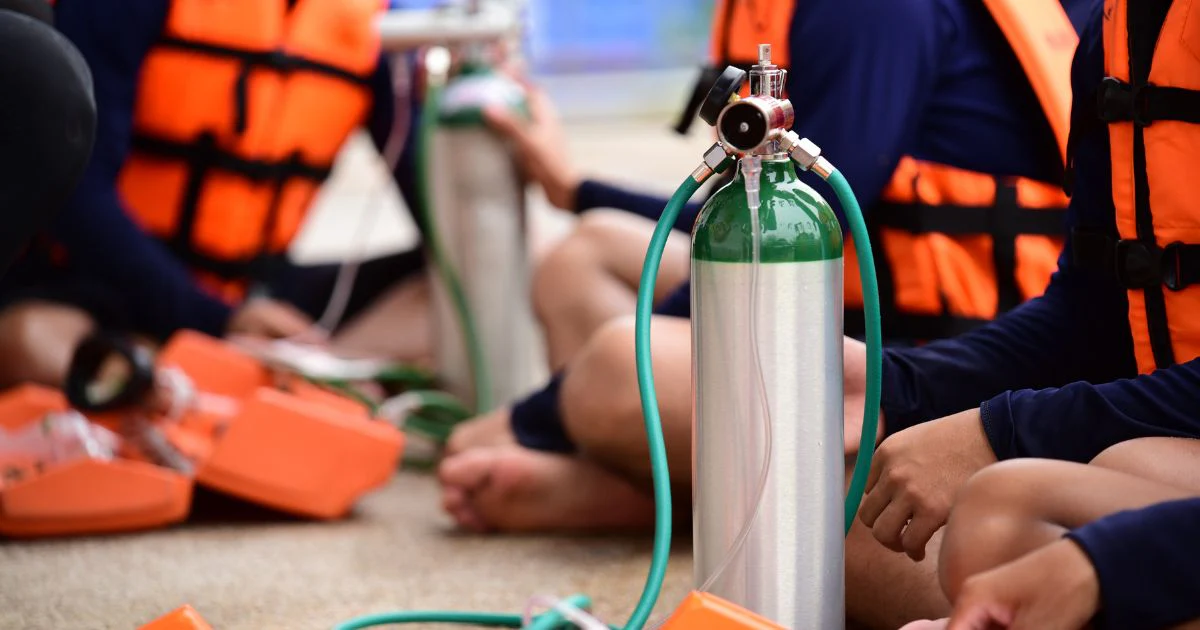
Pure gases CGA selection chart for fittings
Users are strongly advised to fully understand the specific properties of the gases they are handling. The Compressed Gas Association (CGA) has established standardized valve outlets for each type of gas cylinder, as outlined in the document “CGA STANDARD V-1: Compressed Gas Cylinder Valve Outlet Connections.
| CGA Fittings Required | Pure Gases |
|---|---|
| 510/300 | Acetylene |
| 510/300 | Acetylene |
| 590/346/347/702 | Air |
| 240/660/705 | Ammonia |
| 580/680/677 | Argon |
| 350 | Arsine* |
| 320 | Carbon Dioxide |
| 350 | Carbon Monoxide |
| 660 | Chlorine |
| 510 | Cyclopropane |
| 350 | Deuterium |
| 350 | Ethane |
| 350 | Ethylene |
| 510 | Ethylene Oxide |
| 580/680/677 | Helium |
| 350/695/703 | Hydrogen |
| 330 | Hydrogen Chloride |
| 330 | Hydrogen Sulfide |
| 580 | Krypton |
| 350/695/703 | Methane |
| 510 | Methyl Chloride |
| 580/680/677 | Neon |
| 580/680/677 | Nitrogen |
| 326 | Nitrous Oxide |
| 540/577/701 | Oxygen* |
| 350 | Phosphine |
| 510 | Propane |
| 350 | Silane* |
| 668/660 | Sulfur Dioxide |
| 590 | Sulfur Hexaflouride |
| 580/680/677 | Xenon |
Mixed gases CGA selection chart for fittings
Because the combined properties of gas mixtures often differ from those of their individual components, specific CGA connections are frequently required.
| CGA Fittings Required | Minor Component | Major Component |
|---|---|---|
| 240/660/705 | Ammonia | Nitrogen |
| 350 | Butane | Nitrogen |
| 296 | Carbon Dioxide | Oxygen |
| 580 | Carbon Dioxide | Helium or Nitrogen |
| 580 | Carbon Dioxide and/or Nitrogen | Helium |
| 590 | Carbon Monoxide | Air |
| 330 | Chlorine | Nitrogen |
| 350 | Diborane | Argon, Helium, Hydrogen, Nitrogen |
| 580 | Freon-12 | Nitrogen |
| 296 | Helium | Oxygen |
| 350 | Hexane | Nitrogen |
| 350 | Isobutane | Nitrogen |
| 580 | Krypton | Argon |
| 590 | Methane | Air |
| 580 | Moisture | Argon, Helium or Nitrogen |
| 660 | Nitric Oxide | Nitrogen |
| 660 | Nitrogen Dioxide | Air or Nitrogen |
| 590 | Nitrous Oxide | Nitrogen |
| 590 | Oxygen | Nitrogen or Helium |
| 350 | Propane | Nitrogen or Helium |
| 590 | Propane | Air |
| 660 | Sulfur Dioxide | Air or Nitrogen |
| 590 | Sulfur Hexaflouride | Argon, Helium or Nitrogen |
| 350 | Sulfur Hexaflouride | Hydrogen |
